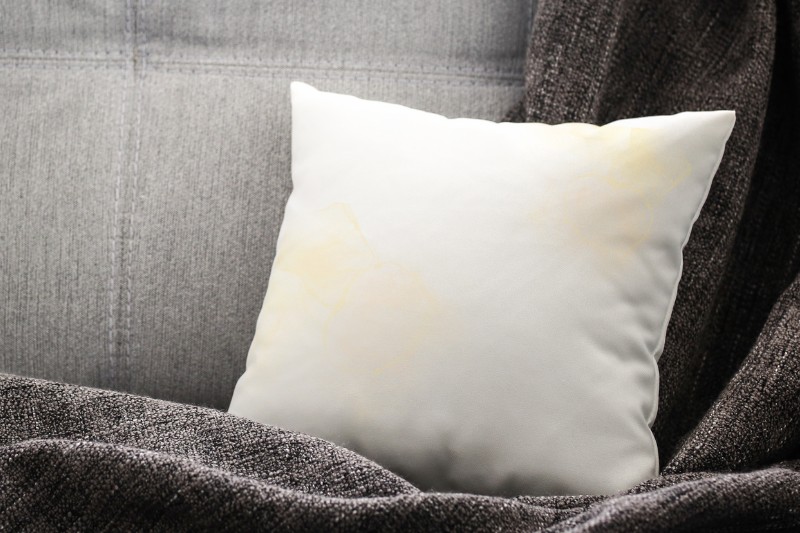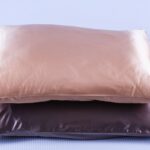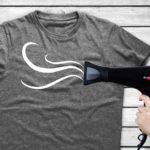Do you have a naturally oily scalp or get warm and sweaty during your sleep? Or maybe you regularly apply hair moisturisers or other products before bed?
Whatever the case, oil-stained pillowcases are a very common problem. And while hair oil may be useful for taming frizz and keeping hair nourished, it isn’t good for your bedding.
In fact, if left untreated, a buildup of natural oils will leave a visibly greasy mark and discolour your pillowcases. It can also lead to pimples, and it won’t smell great either!
So, if you’ve spied this type of stain and you’re not sure how to remove it, read on.
This post covers how to get hair oil out of pillowcases in three easy ways. Plus, some extra tips to bear in mind.
Does Oil Come Out of Pillowcases?
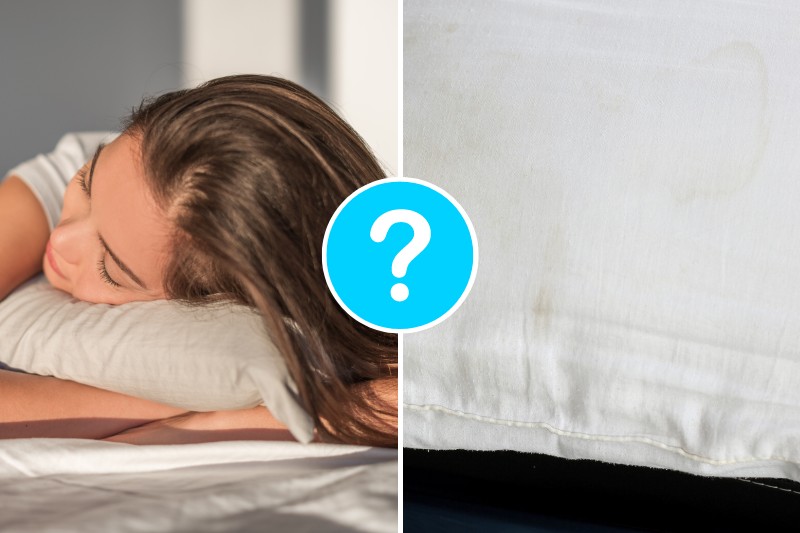
While you may find that grease stains linger when washed at cooler temperatures, you can remove hair oil from pillowcases.
Unlike wine and blood stains that may be set in by hot water, oil deposits are broken down by it.
Therefore, washing your bedding on a 60°C cycle (or higher) once a week is often sufficient.
Of course, the quicker you can treat the stain the better, so check your pillowcases regularly. This may mean washing your pillowcases twice a week if your scalp or skin is especially oily. The same goes if you use hair products that leave a waxy layer behind.
If you’ve laundered your bedding and you can still see greasy marks on your pillowcases, don’t panic. In this case, it is worth pre-treating your pillowcases before a second wash to help pull the grease out of the fabric.
You don’t even need a specialist cleanser to do it. Instead, there are several common household products that should do the trick.
What Pulls Oil Out of Fabric?
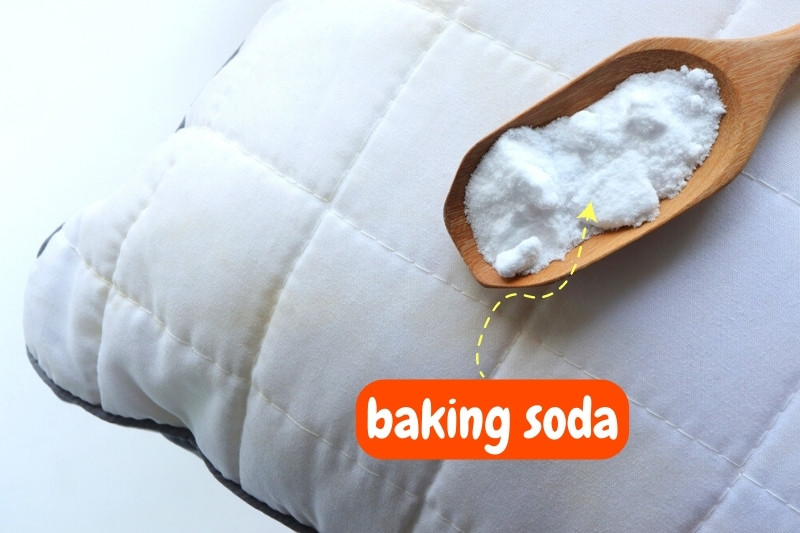
When deciding how to get hair oil out of pillowcases, you have a couple of different options.
The first is bicarbonate of soda (baking soda). This alkaline baking agent works to neutralise hair oil, which typically has a slightly acidic pH level of 4.5 – 5.5.
As a powder, it will also soak up the grease from the fabric so it can be brushed away.
Talcum powder is another option for drawing oil out of your pillowcase and onto itself instead.
Alternatively, washing up liquid designed to lift greasy residue from pots and pans is also gentle enough for fabrics.
When it comes to washing your pillowcases after the pre-treatment stage (covered below), consider using a biological laundry detergent. These contain lipase enzymes that break down fats and oils even at low temperatures – ideal for cleaning delicate silk pillowcases.
Or if you have sensitive skin, stick to a milder non-bio formula and select a hotter wash setting.
How to Get Hair Oil Out of Bedding
Struggling to get hair oil out of your pillowcases during their regular laundry cycle? Try one of the following methods for the best chance of success.
Method 1 – The sprinkle and spray
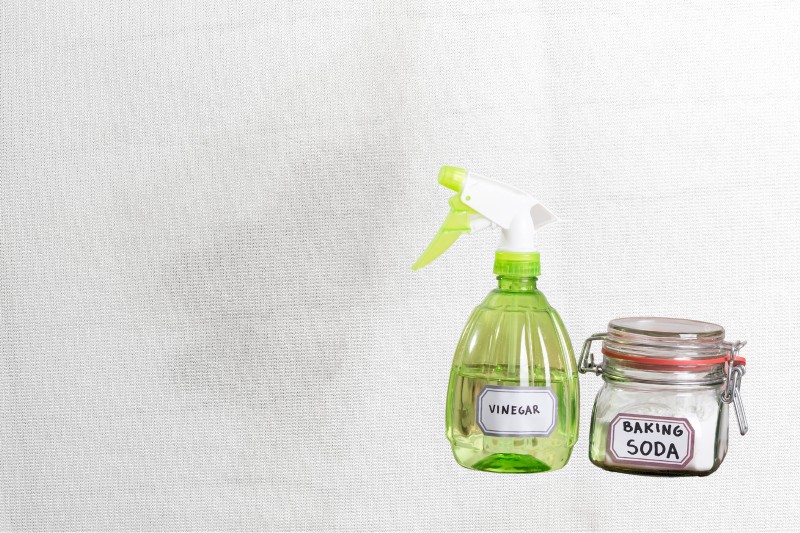
- Lay the oil-stained pillowcase out on a flat surface and place a sheet of cardboard inside it. This will stop it transferring onto the other side of the case when scrubbing.
- Next, sprinkle a layer of bicarbonate of soda over the mark and leave it for 30 minutes
- When time’s up, brush off the powder (and the absorbed hair oil), then rinse the case in hot water. Wring out, lay it out and replace the cardboard insert.
- Next, combine 1 part water and 2 parts white vinegar into a spray bottle. Spritz over the stain, then use a clean toothbrush or nailbrush to scrub any remaining grease out.
- Rinse again, then launder on the hottest temperature recommended on the care label.
Tip: swap fabric conditioner for white vinegar during the rinse cycle. ½ cup of vinegar will lift out any stubborn residue and soften your pillowcases, without leaving a waxy sheen.
Method 2 – The soapy lather
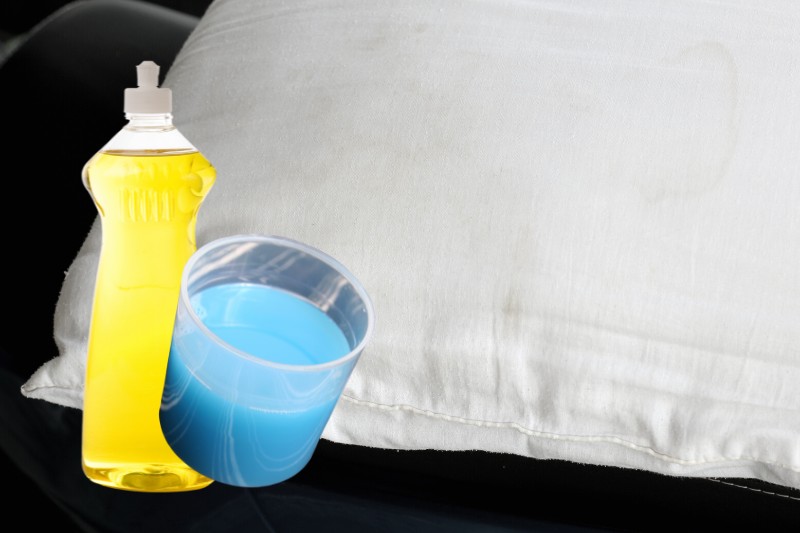
- Spread a layer of neat washing up liquid directly onto the stain using the back of a teaspoon. If you can, choose a colourless formula, especially if you’re cleaning a white pillowcase, to prevent further discolouration. Alternatively, you can use concentrated liquid laundry detergent – both contain grease-fighting surfactants designed to lift dirt.
- Next, apply a couple of drops of water on top and rub the soap in with your fingers to create a lather. Tip: work inwards using a circular motion to avoid spreading the stain.
- Leave the soapy mixture to soak in for 20 minutes. Then rub the fabric against itself to agitate and displace the loosened oil. Or if you prefer, you can use a clean toothbrush.
- Don’t worry about rinsing the soap off. Just transfer the pillowcase into the washer and select the hottest cycle possible with the normal amount of detergent. Then pour ½ cup of white vinegar into the fabric softener drawer to help keep the fabric soft and oil-free.
Method 3 – The overnight soak
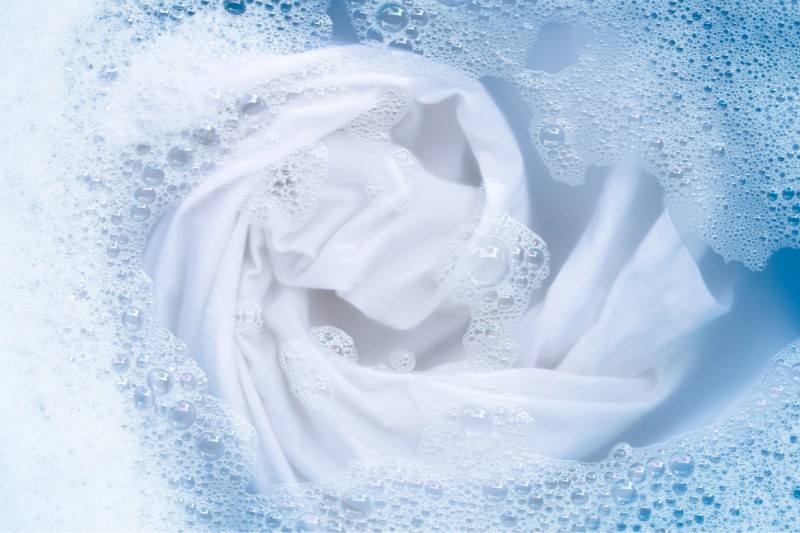
If the hair oil is covering a large section of the pillowcase, it may be easier to soak it. This method is also good for tackling engrained stains and yellowing that has occurred over time.
- Fill a bucket with hot water, ¼ cup of washing up liquid and ½ cup of bicarbonate of soda. Stir the solution until it is sudsy and the powder has dissolved.
- Then place the stained pillowcase into the mixture, making sure it is completely submerged. Leave it to soak for 8 hours – either while you’re at work or overnight.
- Drain the water and scrub the stain with a nailbrush before washing the case as above.
Drying Pillowcases After Removing Hair Oil Stains
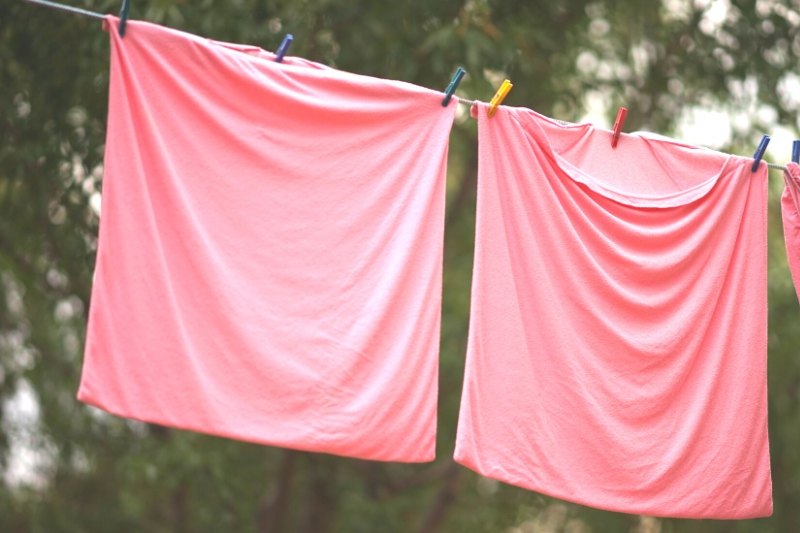
Whichever method you use, one key thing to consider is how to dry the pillowcase afterwards. We’d strongly recommend air drying it rather than using a tumble dryer.
This is because it will be hard to see whether the stain is completely gone until the fabric is dry. And if there’s any grease still in the pillowcase, you could end up baking it into the material. This, of course, will make it much harder to remove next time around!
Line drying is your best bet – particularly for white pillowcases, as the sun will help to bleach any dark spots.
However, you can also dry your bedding indoors on an airer. When they’re dry enough to check that the hair oil has come out, you can then finish them off in the dryer. But avoid dryer sheets as they may exacerbate the problem.

A proud Yorkshire lass with a love for movies, music and cosy nights in! Once a self-confessed avoider of cleaning, she’s always on the lookout for new ways to make household chores as quick and simple as possible.
